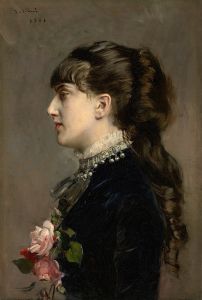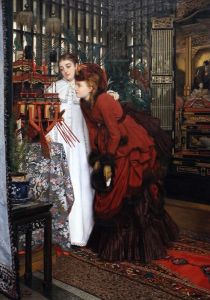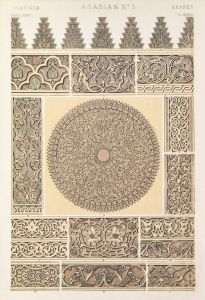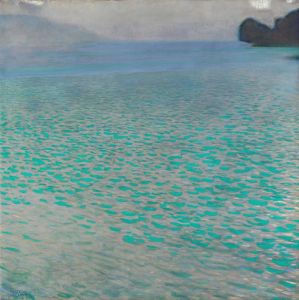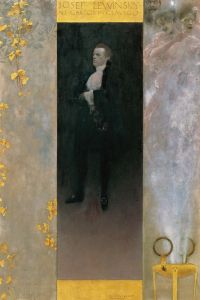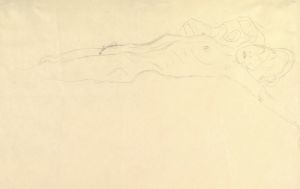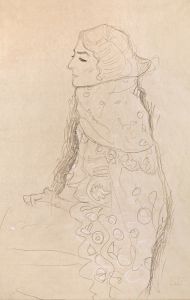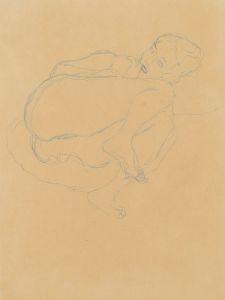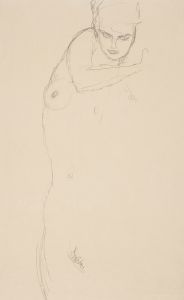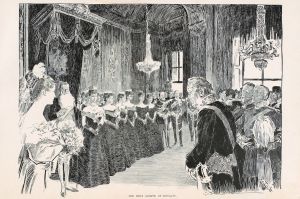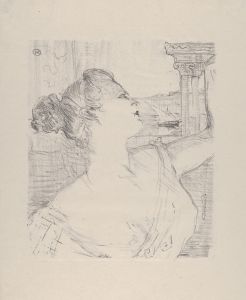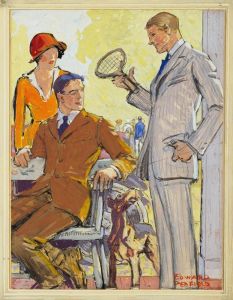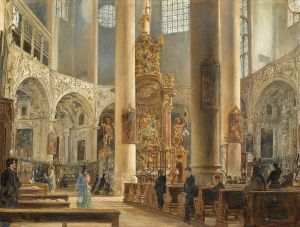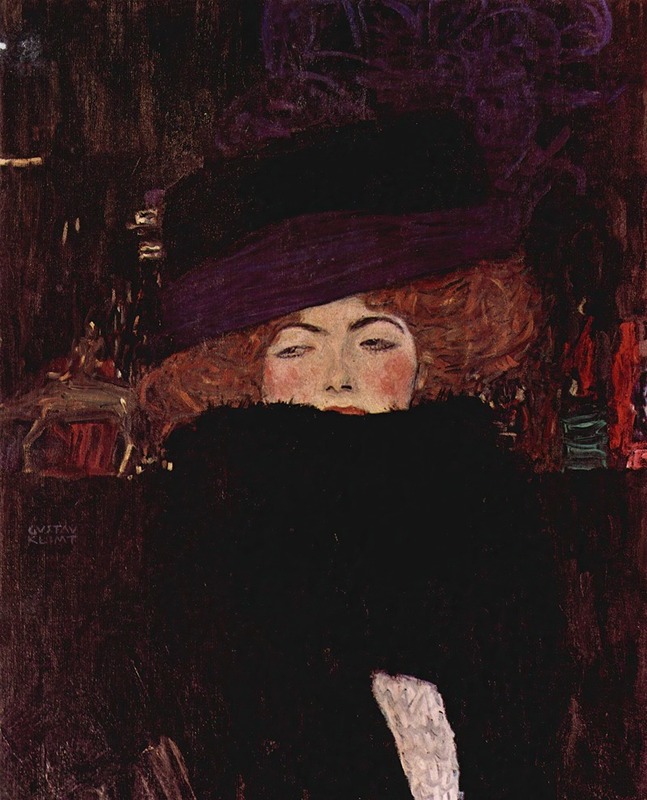
Dame mit Hut und Federboa
A hand-painted replica of Gustav Klimt’s masterpiece Dame mit Hut und Federboa, meticulously crafted by professional artists to capture the true essence of the original. Each piece is created with museum-quality canvas and rare mineral pigments, carefully painted by experienced artists with delicate brushstrokes and rich, layered colors to perfectly recreate the texture of the original artwork. Unlike machine-printed reproductions, this hand-painted version brings the painting to life, infused with the artist’s emotions and skill in every stroke. Whether for personal collection or home decoration, it instantly elevates the artistic atmosphere of any space.
"Dame mit Hut und Federboa" (Lady with Hat and Feather Boa) is a painting by the renowned Austrian symbolist painter Gustav Klimt. Created in 1909, this artwork is an exemplary piece that showcases Klimt's distinctive style, characterized by its decorative elegance and intricate detail.
Gustav Klimt, born in 1862 in Baumgarten, near Vienna, was a prominent figure in the Vienna Secession movement, which sought to break away from traditional academic art. Klimt's work is often noted for its sensuality and use of symbolism, and he is best known for his paintings, murals, and sketches. His most famous works include "The Kiss" and "Portrait of Adele Bloch-Bauer I."
"Dame mit Hut und Federboa" is a portrait that captures the essence of Klimt's fascination with the female form and his ability to convey both beauty and mystery. The painting depicts a woman adorned with a large, elaborate hat and a luxurious feather boa, elements that contribute to the opulent and somewhat enigmatic aura of the piece. The subject's face is partially obscured by the hat, adding an element of intrigue and inviting viewers to ponder her identity and story.
Klimt's use of color and texture in this painting is particularly noteworthy. The rich, deep hues and the interplay of light and shadow create a sense of depth and movement, drawing the viewer's eye across the canvas. The feather boa, rendered with meticulous attention to detail, adds a tactile quality to the work, enhancing its visual appeal.
The painting is also a testament to Klimt's skill in capturing the fashion and style of his time. The early 20th century was a period of significant change in women's fashion, with more elaborate and expressive clothing coming into vogue. Klimt's portrayal of the woman's attire reflects these trends, highlighting his keen observation of contemporary culture.
"Dame mit Hut und Federboa" is housed in the Österreichische Galerie Belvedere in Vienna, Austria, which holds one of the most comprehensive collections of Klimt's works. The Belvedere is renowned for its extensive collection of Austrian art, and Klimt's paintings are among its most prized exhibits.
Klimt's work, including "Dame mit Hut und Federboa," continues to be celebrated for its innovative approach to portraiture and its exploration of themes such as beauty, femininity, and the interplay between reality and fantasy. His influence extends beyond the realm of painting, impacting various aspects of visual culture and inspiring countless artists.
In summary, "Dame mit Hut und Federboa" is a quintessential example of Gustav Klimt's artistic vision, combining his signature style with a captivating portrayal of feminine elegance. The painting remains an important piece within Klimt's oeuvre and a significant work within the broader context of early 20th-century art.





